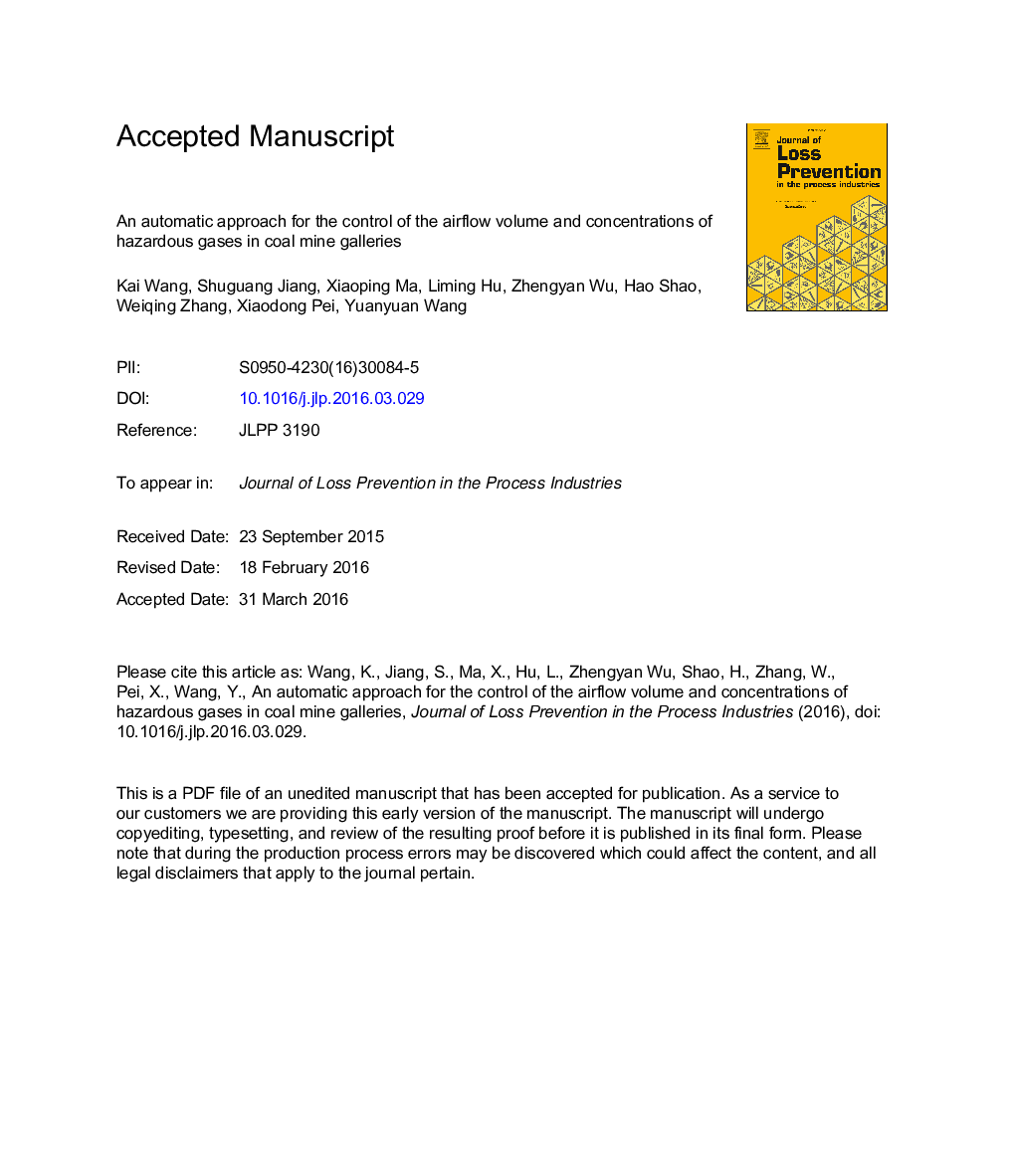| Article ID | Journal | Published Year | Pages | File Type |
|---|---|---|---|---|
| 6973049 | Journal of Loss Prevention in the Process Industries | 2016 | 34 Pages |
Abstract
Intelligently controlling ventilation networks after an abnormal air branch is difficult. The key variable-frequency mine ventilator control factors that are used to correct this phenomenon were discussed. To improve the fitting accuracy of the mine ventilator characteristic curves, a database of characteristic curves for mine ventilators operating at different frequencies was established using the interpolation method for optimizing uniform approximations by Chebyshev. The concept of frequency sensitivity analysis by analyzing the sensitive branch in the ventilation network was proposed. The linear function between the mine ventilator working frequency and branch wind quantity was fitted out by experiments. A model based on Tikhonov regularization measured the branch wind quantity to calculate the wind resistance in the ventilation network, which yielded a unique branch resistance model solution. The mine air was monitored by calculating the variable wind resistance from the branch wind quantity. The sensitive branch coupling in the mine ventilator variable-frequency controlled ventilation was analyzed and combined with the control theory for ventilation networks. Two types of variable frequency were controlled to adjust the branch wind quantity, the frequency-concentration (f-w) servo control method and the curve search method. The experimental model was established for the Da Liu-ta coal mine ventilation system using the mine ventilator variable-frequency system controller to adjust the branch wind quantity. Because gas is explosive, CO2 was used instead of gas for this experiment. The results indicate that the mine ventilator variable-frequency control automatically adjusted the branch wind quantity, which strictly followed the frequency-concentration servo control method and curve search method. Increasing the CO2 concentration caused the mine ventilator variable-frequency controller to increase the branch wind quantity automatically to maintain the CO2 concentration under the threshold value. The experimental results also demonstrated both the practicability of variable-frequency regulation for air branch systems and the feasibility of the branch quantity adjusted theory. Theoretical guidance for adjusting the ventilation branch quantity for a variable-frequency mine ventilator was provided.
Related Topics
Physical Sciences and Engineering
Chemical Engineering
Chemical Health and Safety
Authors
Kai Wang, Shuguang Jiang, Xiaoping Ma, Liming Hu, Zhengyan Wu, Hao Shao, Weiqing Zhang, Xiaodong Pei, Yuanyuan Wang,
